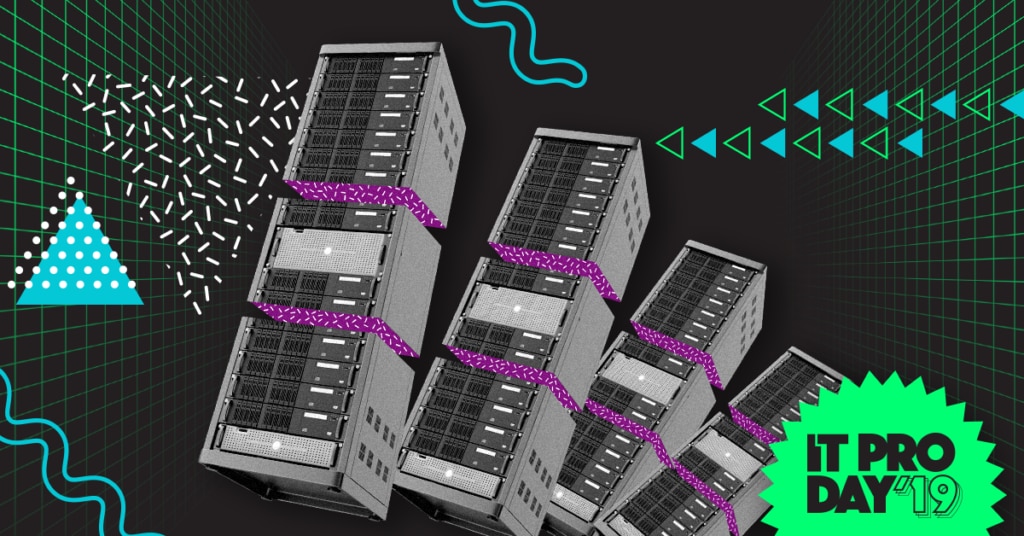SysAdmin Day 2019: The Secret to Getting Ahead


Page Contents
Page Contents
Looking back across the months since SysAdmin Day 2018, it’s obvious we’re all dealing with a remarkably different (in some ways exciting, in others, horrifying) IT landscape than the one we had a year ago.
Sure, all the familiar landmarks are there: routers still route, switches still switch, and servers still serve (even the serverless ones!). We continue to get pulled into way too many meetings and yet management continues to consult us far too little or far too late for us to effectively help and direct the business to make good technical choices. “123456” and “password” continue to be the most commonly used (and hacked) passwords.
But at the same time, the tools, techniques, and technologies shaping (and often interrupting) our days are different in ways that can catch us up short. Ransomware attacks have more than doubled since this time last year, targeting larger organizations and demanding significantly larger payouts. The inexorable push to the cloud is made more challenging by the continuously changing list of cloud providers, offerings, and options. And, while we don’t have to worry about being enslaved by our robot overlords (yet), the increasing sophistication (not to mention commoditization) of solutions leveraging machine learning mean we’re constantly having to reevaluate our vendors and solutions to ensure they’re keeping up with the latest business-enhancing capabilities.
Closer to home, our environments ain’t getting any simpler. Technologies both real (SDN, IoT), nascent (5G, AI), and imaginary (flying cars) vie for our attention. Vendor updates, upgrades, patches, and hotfixes continue to demand our attention. And I swear, if one more exec asks me if a problem could be solved by incorporating blockchain...
Speaking of executives, businesses are relying on IT more than ever—hoping and even demanding technology provide ever-greater lift to the bottom line. To be sure, we’ve seen how the proper application of IT wizardry can create incredible advantages in the marketplace, but “why can’t we do our own ‘Prime Day’-type thing” is becoming the new version of “but that’s how Netflix does it.”
Meanwhile, the users (remember them?) require more of our support—and system resources—than ever. I’m old enough* to remember when BYOD was a contentious issue. “How will we support every hardware platform and software configuration under the sun?” we asked. Little did we know we’d also be supporting anything with a screen.
I don’t say all this to make you feel worse, but to point out a simple reality: we SysAdmins need to (and, if we’re honest, have always had to) find ways to do a lot with a little. The only way it gets done is when we augment our individual abilities. At the end of the day, the two most effective ways to do this are with a team of like-minded SysAdmins, and with the very thing we provide to the rest of the organization: tools and technology.
Having a solid team (squad, posse, gang, etc.) gets a decent amount of press, so I’m going to leave that aside for a moment and focus on tools. No matter whether you’re blessed to be part of an amply staffed department, or if you’re an army of one, “y’all” (as we’re wont to say here at SolarWinds) are a finite resource. If you want to have a hope of wading through the pile of tickets in your queue, you’re going to have to find something that is, as the military puts it, a “force multiplier.”
Need to know what changed and when on all your switches? You can do the telnet-tango all night, or you can have automation rip through every router in an hour. Don’t have enough eyeballs to see when a server is sawtoothing? I bet there’s a server monitoring solution that’s got your back. And if you haven’t automated application restarts, you’ll be scheduling carpal tunnel surgery long before your list is down to even the low hundreds.
Whether the tools to fit your needs are free (“Free as in beer,” in the words of Richard Stallman), freemium, or full-price is up to you. What I’m offering is my humble opinion that, if you do a task more than once, you should already be thinking about how you’d automate it, and if a system fails the same way twice, you should already have a plan to monitor it.
Where do you find out how to do this? How to even get started? That brings us back to the topic of teams. Great news: the answer is (electronically) all around you, even if you’re a lone wolf in the data center. We SysAdmins are a worldwide community, a tribal affiliation transcending geography, culture, language, or operating system. You can find other members easily on social media and online forums. Jump on any of those, explain the work you’re trying to stop doing, and almost before you hit “send,” the suggestions will be rolling in. Yes, I even have a few of my own.
But WHICH tool you choose isn’t as important as this simple fact: when you find you’re falling behind, stuck on a process or issue, you should be asking yourself, “I wonder if there’s an app for that.”
*To be fair, my high-school-aged son is old enough to remember this too. Mostly because there was a point in time when I’d come home from work and complain about it almost nightly.



